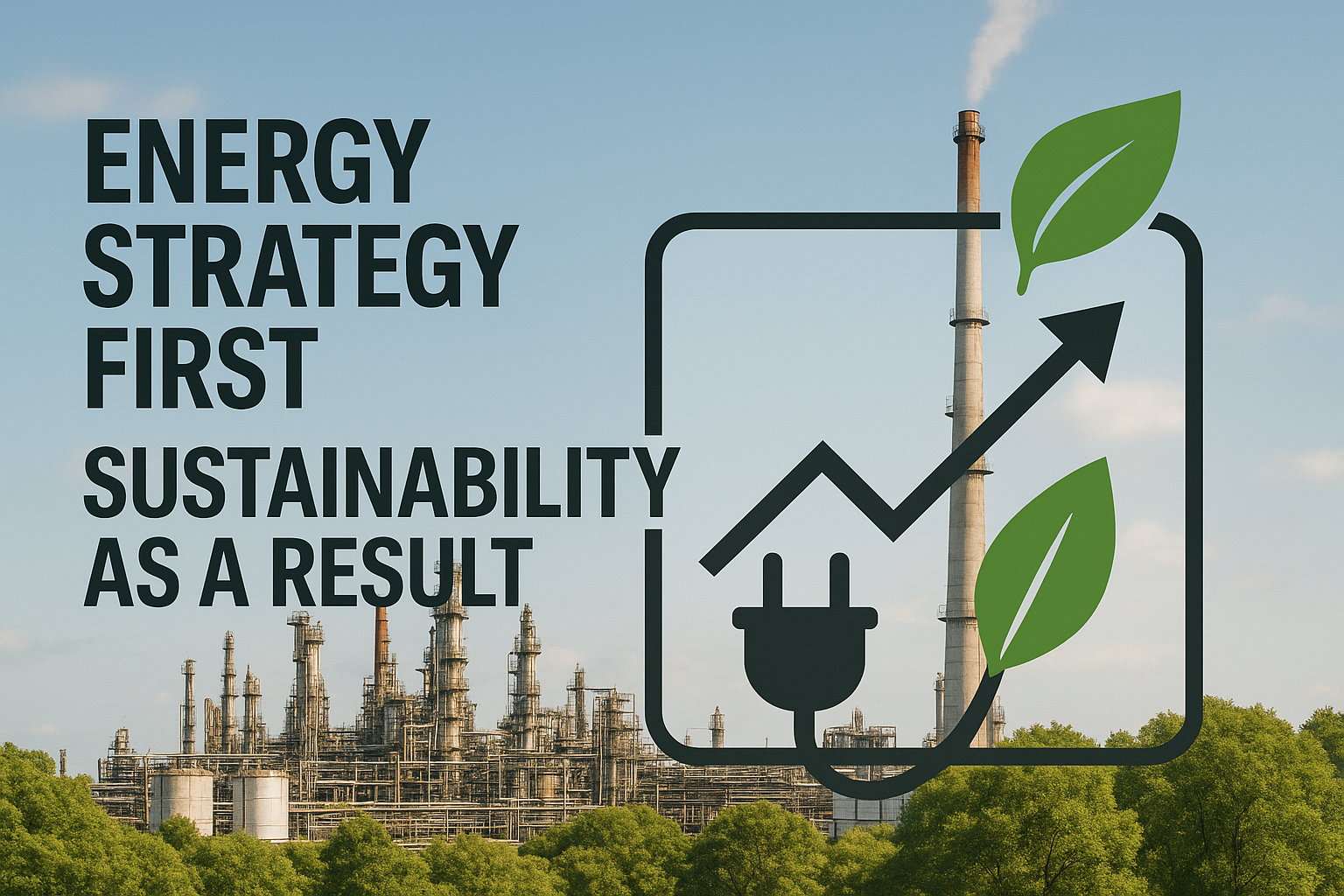Digital transformation in oil & gas is already delivering measurable value. Yet even as early adopters enjoy these wins, the industry faces mounting pressures, commodity price swings, tightening ESG targets, and fierce margin scrutiny demanding faster, safer, leaner operations.
Meanwhile, the push toward always-connected assets has created new vulnerabilities. 91% of sector professionals now see robust cybersecurity as essential for any digital initiative. You can’t simply bolt new software onto decades-old infrastructure and hope for the best. Sustainable impact requires a structured roadmap that aligns technology choices with clear business objectives and a workforce ready to use them.
The ten practices outlined here distill what works across exploration, processing, and distribution—giving you a field-tested blueprint for turning digital ambition into operational excellence.
1. Define Clear Business Objectives
Every digital move you make in oil and gas has to earn its keep. Start by anchoring each initiative to hard-number KPIs, margin growth per barrel, incident-free hours, or verified CO₂ reductions, so everyone understands the business value at stake. When projects launch without this line of sight, they tend to stall: many pilots never scale because executives struggle to trace a clear return on investment.
Translate high-level ambitions into operational targets that matter on the ground. A downstream team might chase a $0.30-per-barrel uplift by tightening diesel quality buffers, while an upstream group focuses on trimming unplanned downtime per well.
Before you deploy any code or equipment, convene a proof-of-value workshop. Bring finance, operations, and IT to the same table, baseline current performance, and quantify the upside you expect the technology to unlock. Sort your roadmap by business impact versus implementation complexity. Tackling high-impact, low-complexity opportunities first builds momentum and frees up capital for heavier lifts.
2. Invest in Data Quality and Integration
Most oil and gas operations are drowning in data but starving for insight. Sensor readings, well logs, and business records exist in separate silos. Values get copied into spreadsheets or buried in disconnected historians. This fragmentation kills AI initiatives before they start because models trained on partial inputs deliver unreliable guidance that operators quickly learn to ignore.
Fragmented data flows are the biggest obstacle to digital progress, far outweighing any technical limitations in analytics. Start by mapping every data source and establishing shared naming conventions across systems. Build automated pipelines that flag duplicates, fill gaps, and validate ranges, work that eliminates false alarms and catches real issues before they escalate.
The goal is a unified architecture where plant historians feed cloud data lakes so front-line operations, engineering, and finance work from the same foundation. API layers let you extract value from legacy systems without expensive replacements. Before scaling, audit your data quality by tracking missing values, timestamp drift, and tag health, then address the highest-impact gaps first.
3. Embrace Cloud and Edge Computing
A hybrid model that blends cloud scale with edge immediacy gives you the best of both worlds. Moving first-pass analytics to ruggedized edge devices means remote wells and offshore platforms get real-time oversight even when bandwidth is scarce. When connectivity returns, only curated data travels to the cloud for enterprise-wide optimization and long-term storage. This approach trims network costs and latency while preserving historian depth.
Edge deployments also reduce exposure to security risks. Sensitive process data can stay behind the firewall, while cloud layers handle heavy forecasts and cross-site benchmarking. This setup supports zero-trust segmentation and simplifies compliance audits without stalling your digital roadmap.
Workload staging keeps risk low during implementation. Start by classifying applications, operator displays, high-frequency control loops, and advanced analytics; then shift only the data that justifies the migration cost. Plants with strict operational technology rules can still benefit from cloud advantages through on-premises solutions that deliver continuous, AI-driven optimization locally and ship aggregated insights to the cloud when policy allows.
4. Prioritize Cybersecurity and Compliance
Each new sensor and cloud connection creates another entry point into your operation. The oil and gas sector’s critical infrastructure status makes it a prime target, and 69 percent of professionals believe their facilities are more vulnerable than ever to operational technology attacks. Security isn’t optional; it’s the foundation for any digital gains.
Start with zero-trust principles: authenticate every user, device, and data flow before granting access. Combine this with strict operational technology and IT network segmentation so refinery control systems stay isolated even when office networks are compromised. Continuous monitoring through anomaly-detection tools helps identify threats in micro-segmented environments before they spread.
Compliance frameworks like NIST and ISO 27001 should guide your security roadmap. These aren’t just paperwork exercises; aligning cybersecurity investments with ESG and safety metrics strengthens your business case while reassuring stakeholders.
Practice incident response regularly. High-profile outages prove that hours matter when production, safety, and public trust are at stake. Frequent drills, third-party penetration testing, and real-time risk dashboards reveal weaknesses before attackers find them, transforming security from a cost center into a strategic advantage.
5. Leverage Advanced Analytics & AI for Process Optimization
When you rely only on descriptive dashboards, you see what happened. With diagnostic models, you learn why. But once you reach prescriptive and closed-loop AI, the system learns how to run better and does so in real time.
Start with focused use cases, predictive asset health, energy intensity, yield tuning—so you can rack up measurable quick wins. As trust grows, layer in plant-wide coordination that lets reinforcement learning models balance multiple units simultaneously.
The result is not just more efficient, consistent, and higher volumes of production, but a workforce that sees AI as a partner rather than an intrusion, because every recommendation is anchored in the data you already know.
6. Foster a Digital Culture
Even the smartest algorithm stalls when front-line operations don’t trust it. You need a culture that rewards experimentation, shares data freely, and learns as quickly as the technology itself. Start by tying every digital goal to outcomes crews already value—safer shifts, fewer night-callouts, steadier throughput. Clear messaging from executives, backed by budget and personal visibility on site, signals that digital isn’t a side project; it’s the future of operations.
Early engagement matters. Bring operators and field technicians into design workshops, let them critique dashboards, and invite them to pilot new workflows. Digital culture initiatives that track engagement and flag adoption bottlenecks help you steer change management in real time.
Upskill relentlessly. Short, targeted modules on AI basics, data quality, and cyber hygiene build confidence, while immersive programs like Imubit Academy turn motivated employees into internal champions who mentor peers. Pair these champions with veteran subject-matter experts to bridge generational gaps and dissolve resistance. By aligning incentives, investing in skills, and celebrating small wins, you create a self-reinforcing loop that keeps digital momentum alive.
7. Implement Scalable & Flexible Technology Solutions
You can’t modernize front-line operations if every new tool needs a custom bolt-on. Start by insisting on modular architectures that speak the same language. Open-standard APIs let newer applications tap existing DCS data without rewriting code; critical when many plants still run on decades-old legacy systems that resist direct integration. Low-code workflow engines and microservices add flexibility, allowing you to spin up new digital workflows quickly while keeping core control layers stable.
Scalability means placing compute power where it delivers the most value. A hybrid model that pairs cloud analytics with latency-free edge computing keeps optimization running even when remote links drop, while limiting bandwidth costs for high-volume sensor streams. This setup ensures your most critical processes never lose their digital advantage.
When evaluating vendors, look for solutions that deploy in stages, read from existing historians, and move to closed-loop control only after you validate economic impact. The platform should provide on-premises or cloud options so you can standardize enterprise governance without sacrificing plant-specific flexibility, minimizing disruption today while giving you runway for tomorrow’s innovations.
8. Collaborate with Trusted Partners
Transformation rarely succeeds as a solo effort. You move faster and see measurable returns sooner when you team up with partners who already understand front-line operations and the unique constraints of the oil and gas value chain. The right allies bring proven playbooks, fill critical skill gaps, and shoulder a share of implementation risk, freeing you to stay focused on production targets and safety obligations.
When evaluating potential partners, prioritize those with deep domain expertise in refining, midstream, or upstream operations. They should offer a structured implementation methodology with clear milestones and success criteria, plus dedicated post-go-live support that keeps solutions tuned to shifting feedstocks, product slates, and regulatory pressure.
Effective collaboration blends external know-how with your in-house talent. Assign joint squads—operations, maintenance, IT, and partner engineers—so every optimization insight is tested against real constraints before it reaches the distributed control system. Build knowledge transfer into the project plan through shadowing sessions, co-authored SOPs, and routine model reviews.
To keep partners accountable, set economic KPIs, margin uplift per barrel, energy cost per unit, emissions intensity, before deployment. Track them on shared dashboards, review gaps in quarterly steer-co meetings, and tie fee structures to sustained impact. When both sides win only when the plant wins, collaboration becomes a durable engine for ROI.
9. Focus on Sustainability & Environmental Impact
Decarbonization targets keep tightening, and meeting them starts with data you can act on. By weaving AI, IoT, and edge computing into your assets, you gain continuous visibility into emissions and energy use patterns that weren’t accessible before.
With those tools in place, you monitor emissions in real time, let cloud models fine-tune furnace fuel rates for optimal energy use, and rely on predictive maintenance to spot failing pump seals before they vent hydrocarbons or exceed permit limits. The combination creates a proactive approach to environmental compliance rather than reactive damage control.
Impact measurement becomes straightforward when you lock in a pre-project baseline, then track carbon intensity, energy per barrel, and water draw in ESG dashboards that export directly into GRI-ready regulatory reports. This gives executives the evidence they need to demonstrate environmental progress to stakeholders.
Advanced optimization solutions amplify these gains by learning your plant-specific operations and adjusting setpoints continuously. Facilities using this technology report natural-gas demand dropping by as much as 15% alongside noticeable stack-emission cuts—proof that sustainability can grow profits, not just satisfy compliance.
10. Continuously Monitor, Measure & Iterate
Before deploying any solution, establish a clear baseline. Pull clean historian, maintenance, and energy data so you can prove whether the new system actually moves safety, margin, or emissions numbers. Skipping this step kills many projects at the pilot phase, even as overall maturity improves across the sector.
Translate business goals into a handful of leading and lagging KPIs: $/barrel margin, unplanned downtime, natural-gas consumption, or flare intensity. Track them through a unified dashboard that merges OT and IT data, surfacing live economic impact alongside model confidence so operators can see exactly how each control move affects profitability.
Adopt an agile cadence that fits industrial realities. Short, clearly scoped releases validated against the baseline keep risk low and operator trust high. Every release needs a structured feedback loop: operators annotate unexpected events, engineers feed those insights back into the model, and your data team refines the next iteration. When a pilot consistently outperforms the baseline, replicate the playbook to adjacent units, then across the entire network.
Connecting Imubit to Your Digital Transformation Journey
An AI-centric approach ties every best practice together—from data quality and edge computing to cybersecurity and sustainability—and the Imubit Industrial AI Platform makes that integration real. When you connect your historian and distributed control system to our Closed Loop AI Optimization solution, the model learns your plant-specific operations in real-time and pushes set points that align directly with the KPIs you care about.
Partnership is central to our methodology. If you’re ready to see how these results translate to your facility, join us for a Complementary Plant AIO Assessment and map the next steps of your journey toward safer, more profitable, and more sustainable operations.




